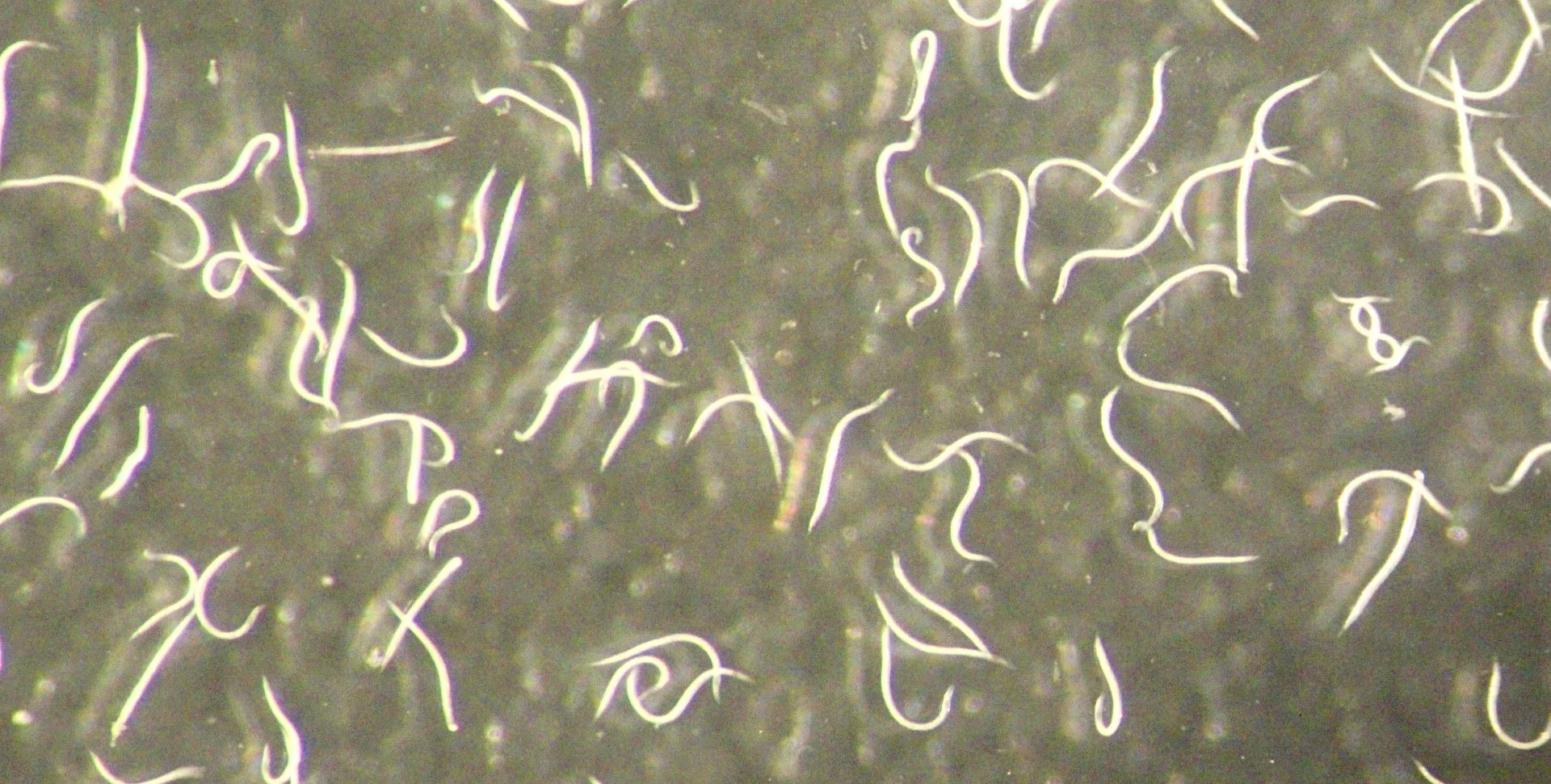Scientists at University of California, Riverside have found a small species of worm that attacks and destroys insects.
 Close-up look at the new nematode species, Steinernema adamsi. Image Credit: Adler Dillman / UCR
Close-up look at the new nematode species, Steinernema adamsi. Image Credit: Adler Dillman / UCR
In warm, humid environments where other beneficial nematodes are currently unable to flourish, these worms, known as nematodes, may be able to control agricultural pests.
This new species belongs to the Steinernema family of nematodes, which has long been employed in agriculture as an organic pesticide-free means of controlling insect parasites. Steinernema were first found in the 1920s and are not dangerous to humans or other mammals.
We spray trillions of them on crops every year, and they’re easy to buy. Though there are more than 100 species of Steinernema, we’re always on the lookout for new ones because each has unique features. Some might be better in certain climates or with certain insects.”
Adler Dillman, Professor, Nematology, University of California, Riverside
In an attempt to learn more about a distinct species of Steinernema, Dillman’s group asked samples from colleagues in Thailand.
Dillman stated, “We did DNA analysis on the samples and realized they weren’t the ones we had requested. Genetically, they didn’t look like anything else that has ever been described.”
The new species has recently been described by Dillman and associates in the Journal of Parasitology. Measuring slightly under 1 millimeter in length and half the breadth of a human hair, they are almost undetectable to the unaided eye.
He stated, “Several thousand in a flask looks like dusty water.”
The American biologist Byron Adams, the chair of Brigham Young University’s biology department, is the inspiration behind the name Steinernema adamsi, given to the new species.
Dillman added, “Adams has helped refine our understanding of nematode species and their important role in ecology and recycling nutrients in the soil. Adams was also my undergraduate advisor and the person who introduced me to nematodes. This seemed a fitting tribute to him.”
Adams, who is presently conducting nematode research in Antarctica, expressed gratitude for having his name associated with such a “cool” species in scientific literature.
The biology of this animal is absolutely fascinating. Aside from its obvious applications for alleviating human suffering caused by pest insects, it also has much to teach us about the ecological and evolutionary processes involved in the complex negotiations that take place between parasites, pathogens, their hosts, and their environmental microbiomes.”
Byron Adams, Chair, Biology Department, Brigham Young University
Dillman became interested in studying these worms after learning about their life cycles during his undergraduate studies. Nematodes in their juvenile form have sealed mouths and live in the soil, where their development is halted. They roam the soil in search of insects to infect during that stage. They enter the mouth or anus of the victim they have located and deposit highly pathogenic bacteria there.
Dillman stated, “A parasite that poops out pathogenic stuff to help kill its host, that’s unusual right out of the gate. It’s like something out of a James Cameron movie.”
Within 48 hours of infection, the insect dies.
“It essentially liquefies the insect, then you’re left with a bag that used to be its body. You might have 10 or 15 nematodes in a host, and 10 days later you have 80,000 new individuals in the soil looking for new insects to infect,” he noted.
The researchers are certain that S. adamsi kills insects. They confirmed this by putting some of them in containers with wax moths.
Dillman pointed out, “It killed the moths in two days with a very low dose of the worms."
Moving forward, the researchers seek to find the nematode’s special traits.
“We don’t know yet if it can resist heat, UV light, or dryness. And we don’t yet know the breadth of insects it is capable of infecting,” Dillman added.
S. adamsi, however, belong to a genus that has the ability to infect hundreds of different kinds of insects. Thus, regardless of whether it proves to be a specialized or generalist parasite of various insect species, the researchers are optimistic that it will be advantageous in some way.
Dillman concluded, “This is exciting because the discovery adds another insect-killer that could teach us new and interesting biology. Also they’re from a warm, humid climate that could make them a good parasite of insects in environments where currently, commercially available orchard nematodes have been unable to flourish.”
Source:
Journal reference:
Baniya, A., et.al (2024) Steinernema Adamsi N. Sp. (Rhabditida: Steinernematidae), A New Entomopathogenic Nematode from Thailand. Journal of Parasitology. doi.org/10.1645/23-60